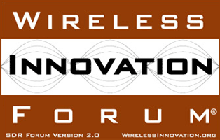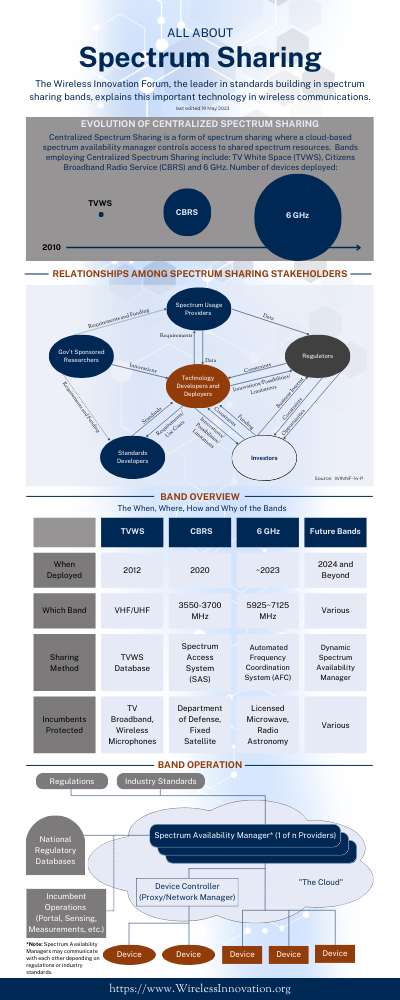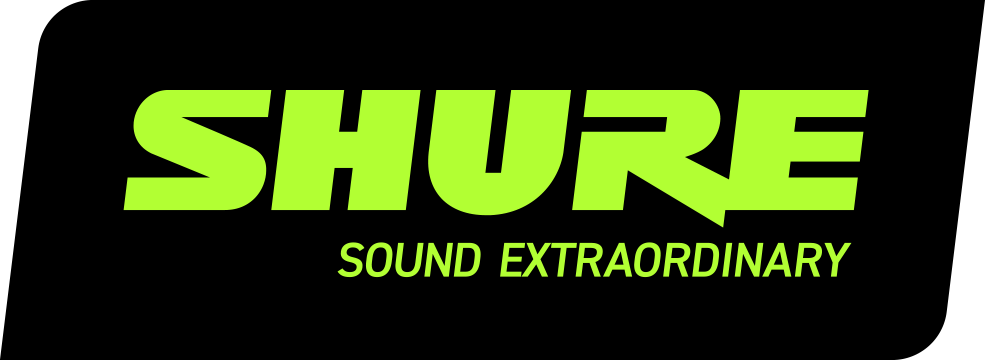- Home
- Knowledge Center
- Reports, Recommendations and Specifications
- Information Documents
- All About Spectrum Sharing Infographic
- Free Webinars
- Tech Talks
- Setting the Standard Video Blog
- Beyond the Radio Dial Video Blog
- Conference Proceedings
- Workshop Proceedings
- Springer Journals
- Market Studies
- What is the SCA?
- Issue Submissions
- Reference Implementations
- What is SDR?
- What are CR and DSA?
- About Us
- Events
- News
- Projects & Committees
- Members
- Join the Forum
History of the Forum and the SCAThe Software Communications Architecture, or SCA, provides a set of specifications “that facilitate portability, interoperability and configurability of the software and hardware components used in the manufacturing of radio systems”[1]. The original technologies for these specifications were developed in the late 1980’s and early 1990’s with the first public release of a consolidated specification occurring through the Forum’s Technical Report Version 1.0 in 1997 as the “Software Radio Architecture (SRA)”[2]. The SRA architecture was matured in the Forum’s Technical Report Version 2.1 entitled ““Architecture and Elements of Software Defined Radio Systems as Related to Standards”[3], and was further matured by the members of the Modular Software Programmable Radio Consortium (MSRC), working in cooperation with the Forum’s Mobile Working Group into what became the Joint Tactical Radio System Software Communications Architecture (JTRS SCA). In 2002, the Forum abandoned support of the SRA in favour of the publically available SCA release adopted by the JTRS Program. From 2002 to 2009, the Forum was active in supporting the evolution of the SCA and related specifications around the world, first through its Mobile Working Group (2002 to 2005) and then through the SCA Work Group (2005 to 2009):
In 2009, the Forum was designated as the Public Liaison for the development of the “SCA Next” architecture, and began working with the international community to provide input to this next evolution of the SCA Specification[4]. Contributions to this effort were made by member organizations world wide and programs such as ESSOR. Documents submitted to the JTRS SCA Next Working Panel as a result of these efforts included 5 requests for comment and 3 recommendations as follows:
In 2010, the Forum underwent an Organization Transformation that included the formation of a Coordinating Committee on International SCA Standards (CC SCA)[5]. The mandate of the CC SCA is to support the harmonization of the SCA standards in the first category at the international level for the mutual benefits of all stakeholders to include:
The Committee is led by a Steering Group working in collaboration with an Advisory Council to execute on an agreed upon "Coordination Model for International SCA Standards" (Document WINNF-10-R-0018). Following this model, in 2012 the committee participated in the vote by JTRS to approve the SCA 4.0 (formerly SCA Next) specification [6].
In addition to its work in support of SCA Next, from 2010 to 2013, the CC SCA developed, balloted and approved a number of other work products:
In November 2013 the evolution of the SCA continued through a workshop hosted by the CC SCA and with participation from the JTNC to explore areas to further improve the SCA specification [7]. Key areas for additional improvement defined at this workshop included better backwards compatibility with SCA 2.2.2 and additional updates to the Application Environment Profiles (AEPs) and Interface Definition Language (IDL) profiles. A work plan was established, with the CC SCA taking the lead in developing technical solutions in multiple areas. Committee member representatives donated over 1000 hours to produce six recommendations and two specifications to be sumitted to the JTNC:
The WInnForum’s Technical Contributions to SCA 4.1 SpecificationWell over 2000 hours were volunteered by the Wireless Innovation Forum’s member representatives in developing these solutions. Their efforts resulted in multiple recommendations that were incorporated into the SCA 4.1 Specification, including the following [8]:
Proposed Component Base UML model The volunteer efforts also produced two new Wireless Innovation Forum SDR Standards that were incorporated into the SCA 4.1 Specification [9]:
SCA 4.1 Finalization and PerspectivesThe SCA 4.1 draft specification was released by the JTNC in January of 2015, and the comment period closed in March of that same year. Issues in the specification identified in the collected comments were adjudicated by the Wireless Innovation Forum, with final recommendations delivered to the JTNC in June of 2015 [10]. The final specification incorporating these changes was released by JTNC in August of 2015, and was endorsed by the members of the Wireless Innovation Forum in December of 2015 “as a preferred software architecture for software defined radios” [11]. Early implementation results show that the SCA 4.1 addresses most of the issues identified in SCA 2.2.2, and early adoption is being considered in multiple products and programs [12][13]. SCA 2.2.2 was in use for almost 10 years, and it is anticipated that SCA 4.1 will remain a stable, core reference specification for a similar period of time. Near term enhancements to the SCA-based set of standards will likely lie, therefore, in the development and harmonization of application programming interfaces (APIs) complementing the core specification. APIs in development or under consideration include:
A number of artifacts have also been discussed supporting the migration to this new specification, including an SCA 4.1 users guide, a SCA 2.2.2 to SCA 4.1 porting guide and defining industry agreed metrics for measuring waveform portability. References: [1] https://winnf.memberclicks.net/assets/documents/cc sca charter v3 0 0 - 23 october 2012.pdf [2] http://en.wikipedia.org/wiki/Wireless_Innovation_Forum, MMITS Doc1, Doc2 [3] Architecture and Elements of Software Defined Radio Systems as Related to Standards Part 1, Part 2 [4] http://jtnc.mil/sca/Documents/JPEO-NR-2010-004.pdf [5] http://data.memberclicks.com/site/sdf/SDR_Forum_2010_to_2014_Strat_Plan.pdf [6] http://jtnc.mil/sca/Documents/pressrelease/SCA_4_SCA_site.pdf [7] SCA 4.1 Workshop [8] http://www.wirelessinnovation.org/cc-sca-public-files [9] http://www.wirelessinnovation.org/cc-sca-public-files [10] SCA 4.1 Draft Adjudication [11] WInnF-15-R--0085 [12] http://www.conference.wirelessinnovation.org/2015-agenda [13] SCA 4.1 Workshop Presentations
|



